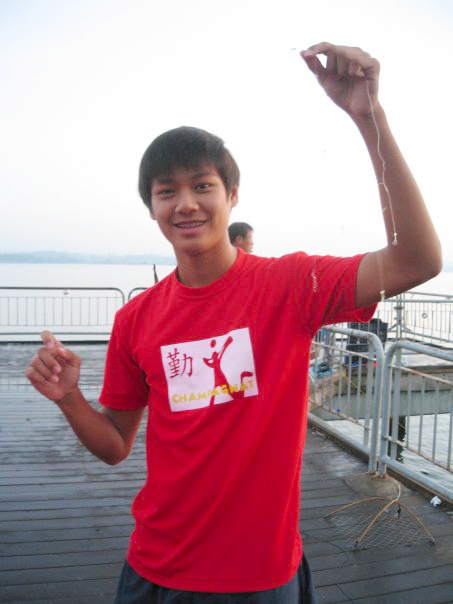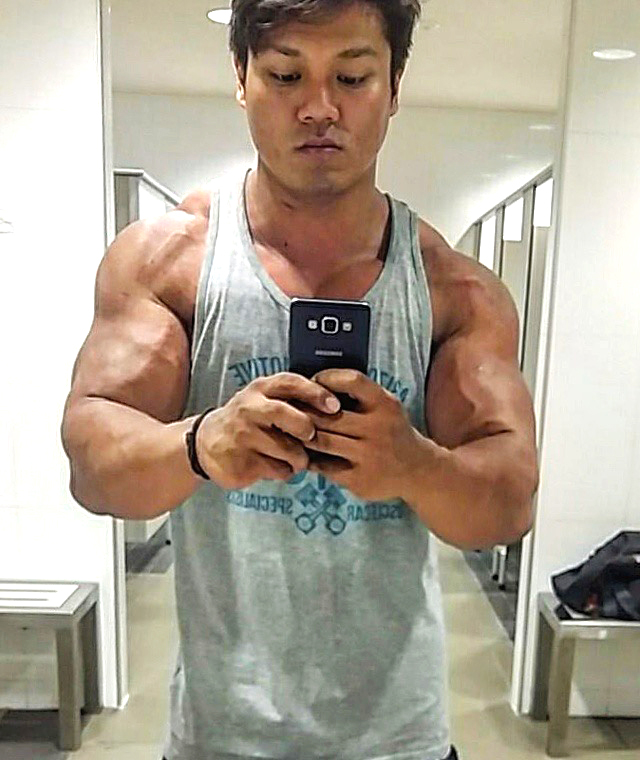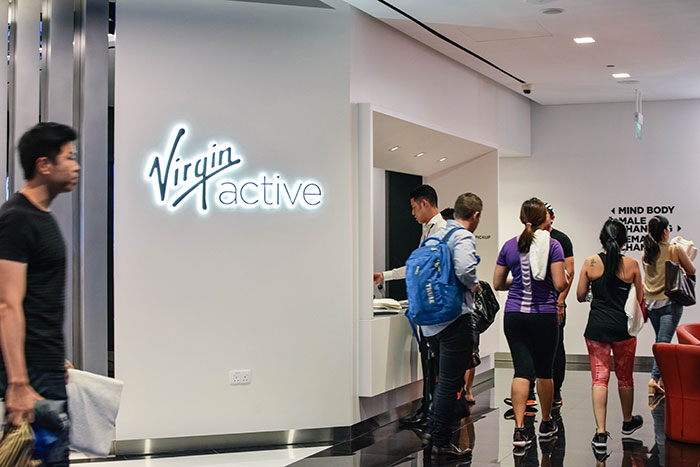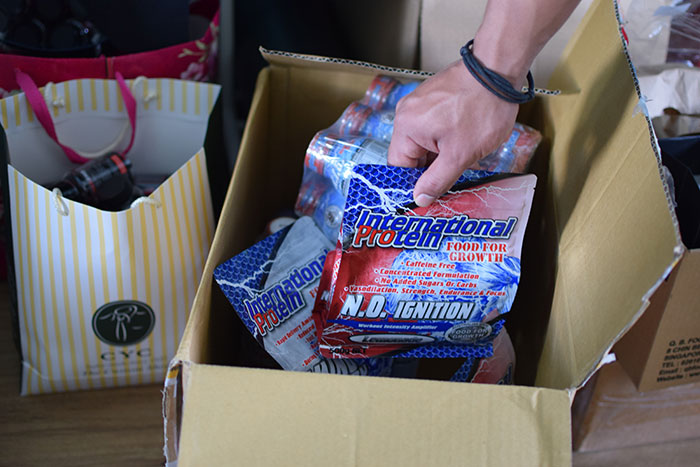henever Ian Thaver, 23, walks down Orchard Road, he gets a few stares and not-so-subtle whispers.
“Sometimes they try to secretly nudge each other but it’s so obvious they’re talking about me,” said the undergraduate at Curtin University in Perth.
But it wasn’t always this way. For most of his life, Ian’s skinny frame could never fill the sleeves of his shirts. After years of being unhappy with his size, at 16 he decided to try working out.


Glo-up: Ian at 16-years-old (left) and at 23-years-old (right).
PHOTOS: IAN THAVER
What started as a hobby soon became a lifestyle. Ian quickly realised that pumping iron alone was not enough. Only after he incorporated a strict diet did he start to see his shoulders broaden and his biceps enlarge.
“It dawned on me that I can actually change my body and mould it to what I like,” said Ian, who has since become used to the attention his brawny body attracts. “It’s in my power.”
Like Ian, for most bodybuilders the desire to look better was what spurred their first weight lift. But as more youth pick up the weights, there’s a growing consensus that being a part of the fitness wave isn’t just a phase. The upkeep that goes into being a modern day gym rat means discipline, rigorous routine, and a commitment to making it a lifestyle.
Growing interest
Alex Betts, president of the Singapore Federation of Bodybuilding and Fitness, which organises competitions and registers local athletes for international competitions, noticed the number of fitness clubs growing since he came to Singapore eight years ago.
Pointing out the window of Asia Square Tower 1, the 33-year-old personal trainer attempts to count those in the area: One Pure Fitness in the building, one True Fitness across the road, two Virgin Actives and about four Fitness Firsts.
“And that’s just the major gyms,” he adds.
The transition of bodybuilding from niche to mainstream is a change he attributes to both the media and social media. The increased media coverage and information on the sport have raised awareness such that, according to Betts, people are realising it’s becoming a lot more common and popular – and worth trying out.
“If you’re on Facebook or Instagram, you’ll struggle to go online without seeing someone posting about their workout, or their meals.”

Booming business: Gym operator Virgin Active is relatively new to Singapore, having only been around for less than four years. But just last year, it announced a $100 million expansion to open eight to 10 more gyms in the central business district and heartlands.
Hustle for muscle

Food and fuel: Just like chicken breast, protein supplements are an essential part of the bodybuilder's diet – and most commonly come in the form of pills, powders and beverages.
In light of the growing interest, Betts looks forward to welcoming more onto the scene – even if they don’t compete. The UK native, who himself competes, describes a bodybuilder as someone who works out with the purpose of building muscle, and revolves their lifestyle around it. Without missing a beat, he added: “They usually have Tupperware.”
Even while serving the nation for two years, Ian woke at 5am every day to prepare his six meals and pack them in neat Tupperware, before heading to camp to book in at 8am. And while his peers looked forward to going home at the end of the day, he looked forward to returning to his workout routine at the gym.
“Everything just revolves around training, eating, then getting my sleep,” he said. “The next day it’s the same thing.”
Now as a student abroad, Ian continues to buy enough chicken breasts, beef and sweet potatoes each week to prepare up to 42 meals for the next seven days.
In order to grow physically, many bodybuilders must also stretch their willpower.
With each weight plate she added onto the barbell, Kelyn Lau, 26, discovered a newfound tenacity both in and out of the gym. “Last time I would be more weak-minded about doing certain things; I’d say ‘I think I cannot,’” said the personal trainer, who started working out four years ago.
“But every time you want to carry a heavier weight to break your personal record, you have to tell yourself you can do it,” she said. “And that makes your mind stronger for many things you do.”
Singapore scene
As a sport here, bodybuilding has had more downs than ups. In 2012, a shadow was cast over the scene when seven national bodybuilders failed drug tests at a local competition. The following year, Sport Singapore revoked the then-Singapore Bodybuilding Federation’s (SBBF) National Sports Association status, removing financial support and leaving many wary about the legitimacy of the sport.
“A lot of very good bodybuilders here won’t compete anymore because of what happened,” said Betts, adding that the scene is still surrounded by “bad feelings”. “They don’t want to get involved.”
Additionally, the “unnatural” look of bodybuilders can be unnerving for those who are not in the scene. “Ew you’re too big” or warnings of sagging in old age are just some of the comments Ian still receives from friends and family. Over the years, he has seen his weight jump from 65kg to 87kg, and once to 100kg in 2015 – his heaviest to date.
“The bigger I get, the more people tell me to stop,” he said.
In bodybuilding, features like a wide back contrasted with a small waist, bulging biceps and vascularity – when veins seem to protrude from the skin – make up the typical physique. Because of this, Betts, who has been training since 2005, said competitive bodybuilding has always been stigmatised.
“You’re basically going for an extreme look,” he explained. “A lot of the women bodybuilders can get very big and muscular, so a lot of guys feel intimidated by that.”
In it for the long haul
Any residual stigma is just water off a very muscled back. Most say they see themselves keeping up the lifestyle long-term.
Adrian Tan, 42, has been bodybuilding since 1997 and doesn’t plan on stopping anytime soon. The professional bodybuilder has won eight competitions, and most recently added “father” to his list of titles.
Since his daughter’s birth, Tan has put competing on hold. But he still makes it a point to eat clean, pack his own meals and train five to six times a week.
“Bodybuilding is something you do 24/7,” said Tan, who has his own personal training business. “You don’t do it for two hours and then just carry on with your life.”
Which is why when he’s home for the holidays, Ian dials back on his strict diet, but makes sure to factor the occasional durian ice cream into his next workout.
“There’s always a consciousness that you keep, in the sense that your meals and training are the first thing you think about and everything revolves around it,” said Ian.
“But I don’t mind living this way; some people go to relax at a bar with friends, I just go to the gym.”